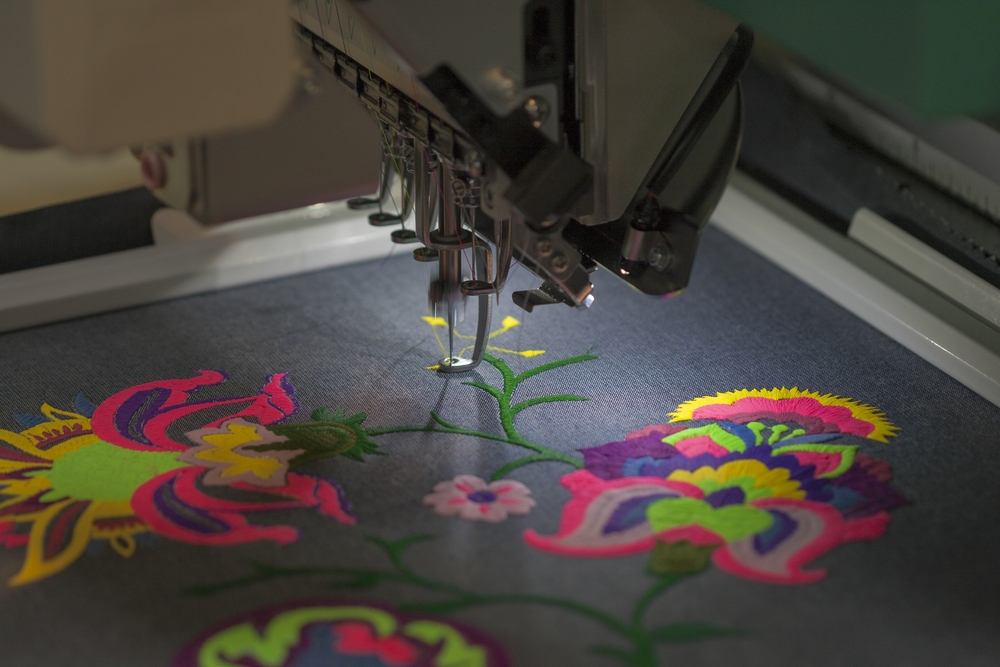Mastering the Embroidery Digitizing Refine: Your Ultimate Overview
Needlework digitizing is a thorough craft that needs accuracy and competence to translate detailed layouts right into digital styles for maker embroidery. As artisans begin on this trip to grasp the embroidery digitizing procedure, a comprehensive understanding of the fundamentals establishes the foundation for excellence. Beyond the primary knowledge lies a realm of advanced software program, specialized devices, and nuanced methods waiting to be checked out. By diving right into the nuances of digitizing, one can unlock a world of innovative opportunities and boost their needlework projects to brand-new elevations.

Understanding Needlework Digitizing Essentials
Embroidery digitizing fundamentals create the foundation upon which detailed layouts are translated into machine-readable formats for accurate stitching. This preliminary action in the needlework digitizing process is important for making sure that the last stitched item is a loyal depiction of the initial layout. Recognizing needlework digitizing essentials entails realizing vital principles such as stitch kinds, sew instructions, thickness, rug, and pull compensation.
Stitch kinds play a vital role in determining the visual and textural outcome of the embroidered layout. By selecting the ideal stitch kind, whether it be satin, fill, or running stitch, digitizers can attain the desired effect and enhance the overall high quality of the embroidery. In addition, sew direction affects the circulation and dimension of the layout, while thickness identifies the spacing and coverage of the stitches.
In addition, rug stitching gives security to the design by safeguarding the material and stopping distortion throughout the embroidery procedure. Pull compensation is one more vital consideration to neutralize the natural propensity of fabric to agreement when sewn. Grasping these needlework digitizing fundamentals is fundamental for producing professional-quality stitched products.
Picking the Right Digitizing Software
Choosing the ideal digitizing software is an important choice that considerably affects the performance and quality of the embroidery digitizing procedure. Digitizing for Embroidery. When picking the right digitizing software, it is necessary to take into consideration factors such as the complexity of layouts you intend to develop, the user-friendliness of the software, the level of client support used, and click over here now the compatibility with your needlework machine
There are various digitizing software options offered out there, varying from standard programs for newbies to innovative software program for specialist digitizers. Some popular choices include Wilcom EmbroideryStudio, Hatch Embroidery Software, and PulseID. These software offer a wide range of tools and features to help you create intricate layouts with convenience.
Prior to choosing, it is suggested to explore the different software choices with complimentary tests or trials to determine which one best fits your requirements. In addition, reviewing testimonials and looking for suggestions from knowledgeable digitizers can give beneficial understandings right into the toughness and weak points of each software application bundle (Digitizing for Embroidery). By carefully assessing your requirements and contrasting the functions of different digitizing software, you can make an informed selection that boosts your needlework digitizing workflow
Digitizing Tools and Techniques

Optimizing Style Settings for Needlework
Mastering the ins and outs of design setups is basic in accomplishing optimal outcomes in the embroidery digitizing procedure, structure upon the foundation laid by understanding digitizing devices and methods. When optimizing layout settings for embroidery, it is crucial to take into consideration elements such as stitch kind, thickness, padding, pull settlement, and registration. Registration setups line up various aspects of the layout precisely, keeping overall style integrity.

Troubleshooting Common Digitizing Issues
When coming across common digitizing problems during the embroidery procedure, it is important to recognize the origin and apply efficient options quickly. One usual problem is stitch thickness issues, where stitches might be too dense, creating the fabric to tighten, or also sparse, bring about gaps in the style. Adjusting the stitch density setups in the digitizing software can assist settle this problem.
An additional frequent difficulty is string breaks throughout the embroidery procedure. This can occur due to numerous factors such as inaccurate stress settings, dull needles, or utilizing low-quality thread. Making certain proper maintenance of the embroidery equipment, including routine needle adjustments and tension adjustments, can lessen the event of thread breaks.
Additionally, layout registration errors can lead to misaligned components within the needlework layout. Checking the design alignment in the digitizing software program and making required modifications before sewing can assist in preventing this issue. By attending to these usual digitizing issues immediately and properly, you can ensure a smoother needlework process and premium completed items.
Verdict
In conclusion, mastering the embroidery find digitizing process requires a solid understanding of the basics, the best option of software program, and expertise of devices and strategies. Enhancing layout settings and troubleshooting common digitizing concerns are critical actions in making certain high-quality needlework outcomes. By adhering to these steps carefully, one can accomplish precision and performance in the digitizing procedure.
 Alicia Silverstone Then & Now!
Alicia Silverstone Then & Now! Alexa Vega Then & Now!
Alexa Vega Then & Now! Shane West Then & Now!
Shane West Then & Now! Julia Stiles Then & Now!
Julia Stiles Then & Now! McKayla Maroney Then & Now!
McKayla Maroney Then & Now!